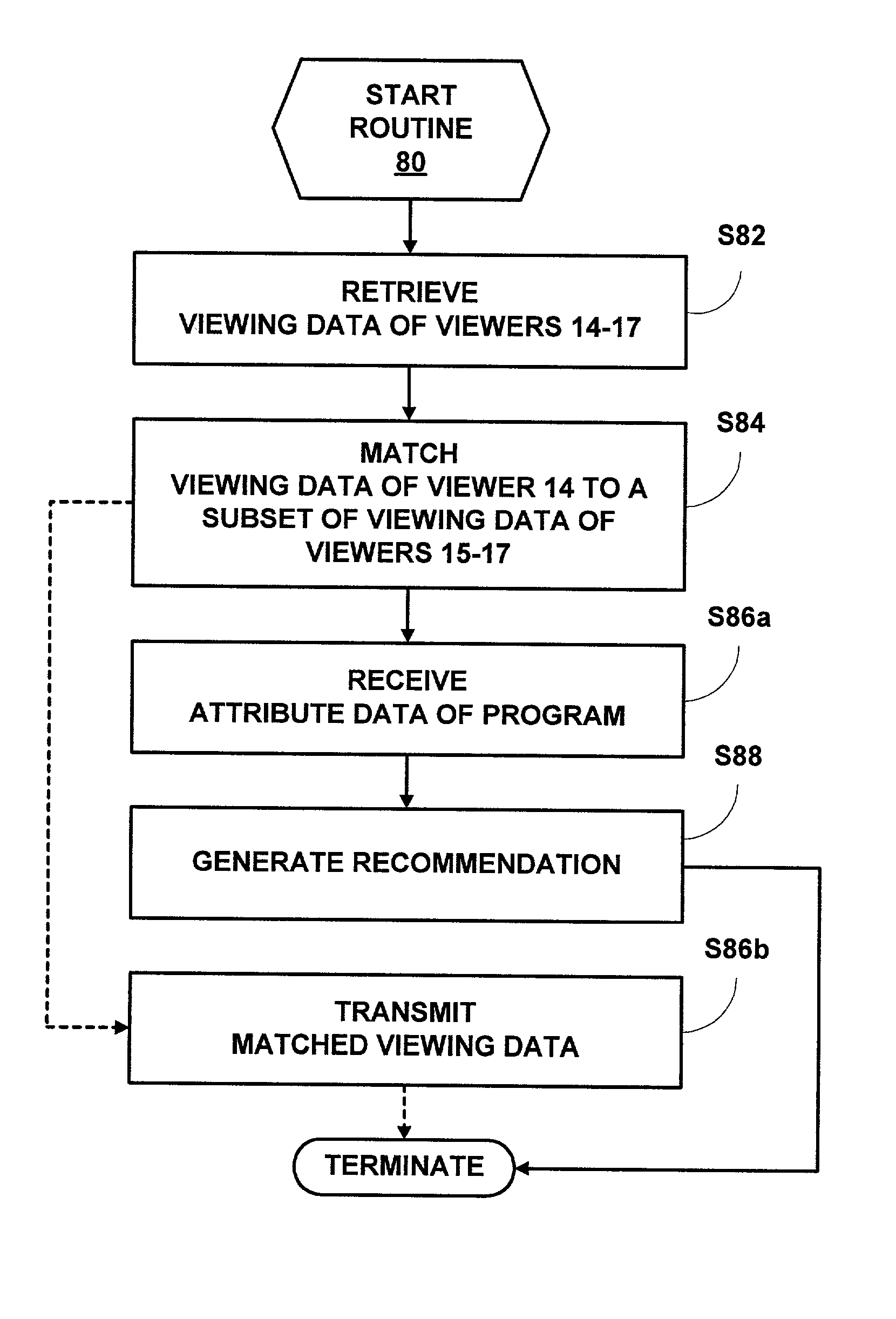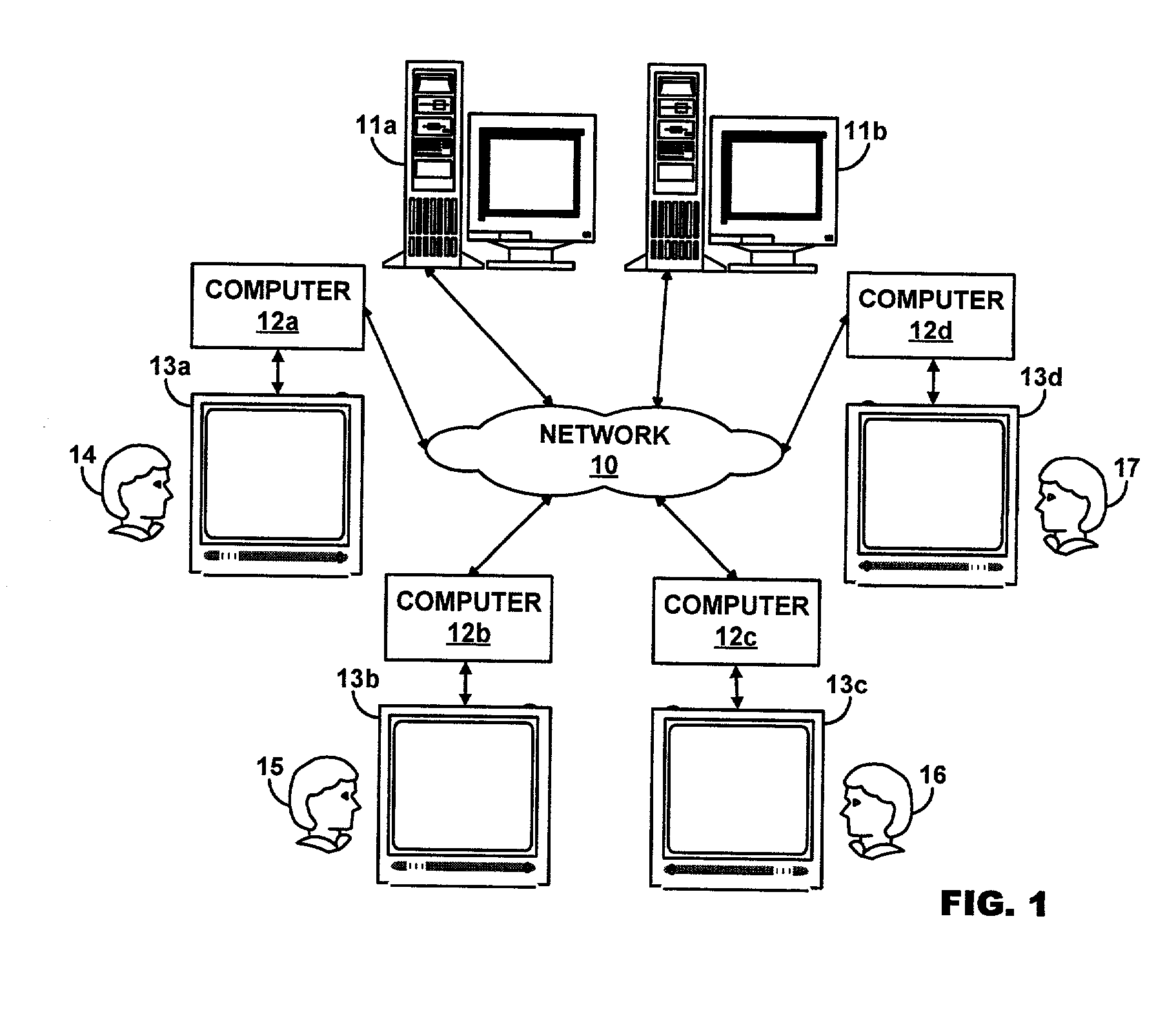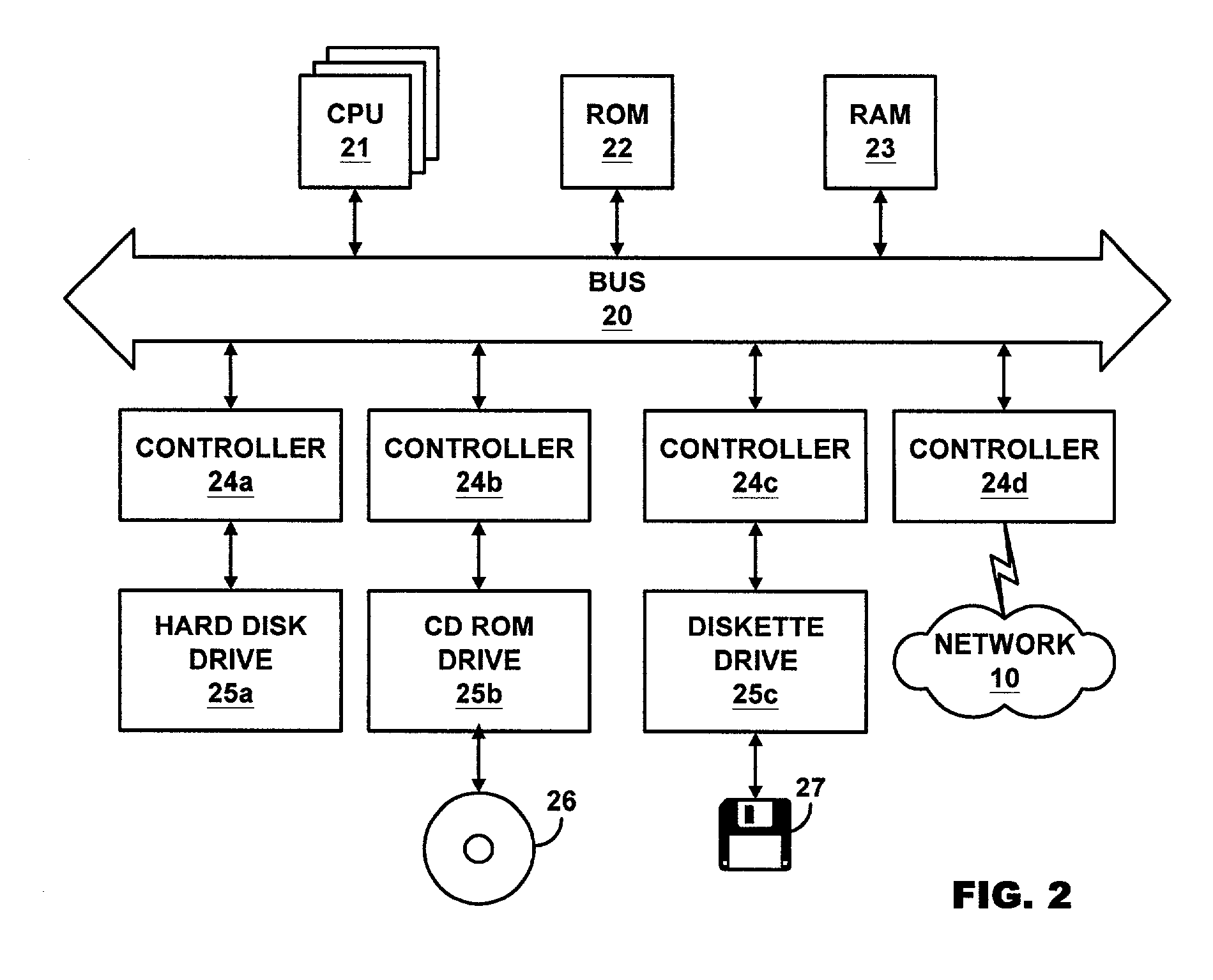Four-way recommendation method and system including collaborative filtering
a recommendation method and filtering technology, applied in the direction of two-way working systems, instruments, television systems, etc., can solve the problems of inability to achieve the effect of each type of profiling system in building a viewer preference database, affecting the degree of effectiveness of each type of profiling system, and inability to meet the needs of users
- Summary
- Abstract
- Description
- Claims
- Application Information
AI Technical Summary
Problems solved by technology
Method used
Image
Examples
second embodiment
[0067] In a second embodiment, module 101 of software 100 executes the following series of steps during stage S84 when determining whether viewer 14 and viewer 15 having matching viewing data.
[0068] First, a score (B,A) is computed from the following equation [2]:
fb_score(B,A)=match (pos(B),pos(A)) / n_pos(B) [2]
[0069] where pos(A) are programs within feedback data D3 having a positive score; pos (B) are the programs within viewing data D15a having a positive score; n_pos(B) is the number of programs within viewing data D3; and match ((pos(B),pos(A)) is the number of programs listed within both pos(A) and pos (B).
[0070] Second, viewing data D15a is provided to a collaborative feedback recommendation module 102 as illustrated in FIG. 6B when fb_score(B,A) of viewing data D15a is greater than a match threshold, such as, for example, 0.9.
[0071] Module 101 thereafter determines whether viewing data D3 matches viewing data D15b and viewing data D15c under the same series of steps. Accordin...
third embodiment
[0072] In a third embodiment, module 111 of software 110 executes the following series of steps during stage S84 when determining whether viewer 14 and viewer 15 having matching viewing data.
[0073] First, an im_score(j) is incremented by one when equation [1] is satisfied for each feature (f) of the attribute-value pairs entries having a probability above a noise cutoff in viewing data D8 and viewing data D17a:
{cp.sub.--i(f)-cp.sub.--j(f)}
[0074] where i designates viewer data D8; j designates viewing data D17a; cp_i(f) is the conditional probability of a feature (f) from viewing data D8; cp_j(f) is the conditional probability of a feature (f) from viewing data D17a; and cp_threshold is a number between an exemplary range of 0.0 and 0.10. The actual value of cp_treshold is determined empirically to control the number of actual matches between viewing data D8 and viewing data D17a.
[0075] Second, a final value of im_score(j) is normalized by dividing the t...
fourth embodiment
[0078] In a fourth embodiment, module 121 of software 120 executes the following series of equations during stage S84 when determining whether viewer 14 and viewer 15 having matching viewing data.
[0079] First, an im_score (B,A) is computed from the following equation [3]:
im_score(B,A)=match (pos(B),pos(A)) / n_pos(B) [3]
[0080] where pos(A) are programs within viewing data D7 having a positive score; pos (B) are programs within viewing data D19a having a positive score; n_pos(B) is the number of programs within viewing data D7; and match ((pos(B),pos(A)) is the number of programs listed within both pos(A) and pos (B).
[0081] Second, viewing data D19a is provided to a collaborative implicit recommendation module 122 as illustrated in FIG. 6D when im_score(B,A) of viewing data D19a is greater than a match_threshold, such as, for example, 0.9.
[0082] Module 121 thereafter determines whether viewing data D7 matches viewing data D19b and viewing data D19c under the same series of steps. Accor...
PUM
 Login to View More
Login to View More Abstract
Description
Claims
Application Information
 Login to View More
Login to View More - R&D
- Intellectual Property
- Life Sciences
- Materials
- Tech Scout
- Unparalleled Data Quality
- Higher Quality Content
- 60% Fewer Hallucinations
Browse by: Latest US Patents, China's latest patents, Technical Efficacy Thesaurus, Application Domain, Technology Topic, Popular Technical Reports.
© 2025 PatSnap. All rights reserved.Legal|Privacy policy|Modern Slavery Act Transparency Statement|Sitemap|About US| Contact US: help@patsnap.com



